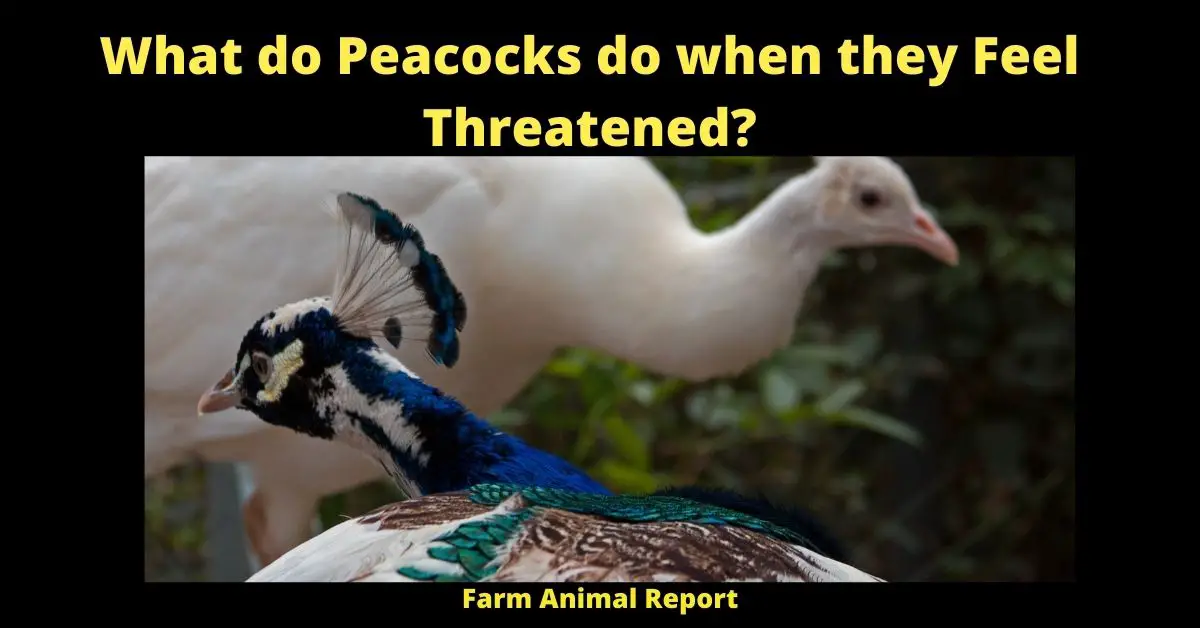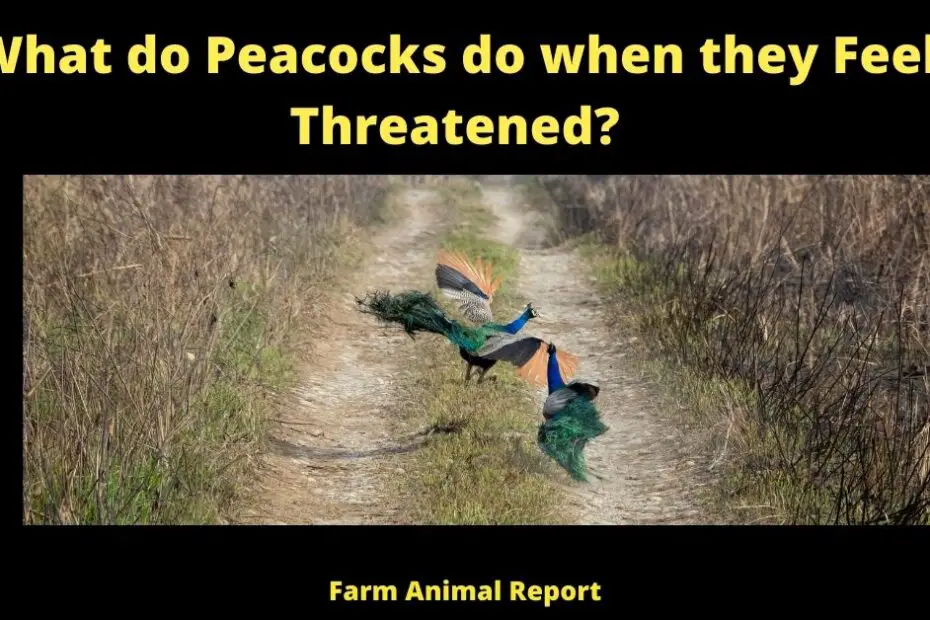What do Peacocks do when they Feel Threatened?
Do you know what peacocks do when they feel threatened? They spread their feathers and make themselves look as big as possible! This is known as the “bluffing” or “threat display.” peacocks do this in order to scare away potential predators. In today’s blog post, we will be discussing the threat display and how it affects peacocks. Stay tuned for more information!
When peacocks feel threatened, they will do one of three things:
They will try to scare the threat away by making loud noises or displaying their feathers
1) Display Behaviors when Threatened
Bluffing
When a peacock fans its tail, it is engaging in a behavior known as “bluffing.” This display is used to intimidate rivals and attract mates. The tail acts as a visual warning, advertising the peacock’s size and strength. What do Peacocks do when they Feel Threatened?
In addition, the loud noise made by the tail feathers can startle and disorient an opponent. Studies have shown that the more elaborate the peacock’s tail, the more successful it is at bluffing.
As a result, males with particularly impressive tails are more likely to win fights, find mates, and father offspring. While the peacock’s tail may seem like nothing more than a pretty decoration, it is actually an important tool for survival.
Loud Screams
When a peacock screams, it is usually because it feels threatened. The loud screeching noise is the bird’s way of trying to scare off whatever is perceived as a threat. In some cases, the peacock may also fan its tail feathers and make loud hissing noises.
All of these displays are meant to intimidate potential predators or other dangers. Peacocks are very protective of their young, and will often scream if they feel that their chicks are in danger.
If the screaming does not work to deter the threat, the peacock may resort to physical violence, using its sharp claws and beak to fight off the intruder.
Challenging forward movements
Peacock challenging forward movements are a type of ritualistic behavior that can be seen among male peacocks.
These movements usually take place in the context of rival males competing for mates and territory, but they can also occur in other social situations such as when a peacock must defend its young or territory.
Peacock challenging movements typically involve one bird lowering its head, flaring its tail, and strutting back and forth with aggressive posture and movement. During these movements, peacocks often utter a throaty growl or shriek to put their opponents “on notice” and establish their dominance.
While some scientists believe that these movements are merely posturing designed to intimidate rivals, others believe that they may play a role in protecting territories or attracting mates. Whatever their purpose, these essential peacock behaviors help to ensure the success of this elegant bird species.

2) Running and Flights
Run and Hide
Peacocks are known for their elaborate and brightly colored tail feathers, which they display to attract mates and intimidate potential predators. In response to threat, peacocks perform a distinctive series of movements known as the “run, hide” response.
First, the peacock will start by running towards cover or tall grasses with its tail extended. If the bird feels threatened, it will also raise its crest feathers and fan its tail feathers outwards.
Finally, if necessary, the peacock will hide itself by crouching low to the ground and remaining still until it senses that danger has passed. Through this innate defense mechanism, peacocks have been able to survive in a wide variety of habitats across the globe.
In fact, some researchers believe that having this highly-evolved response may have even contributed to the species’ success in these diverse environments. Overall, therefore, the “run, hide” response is an essential part of peacock biology and behavior that helps them to thrive in their natural habitats.
Explosive Flights
Peacocks are known for their majestic plumage, but these birds also have an explosive escape response that propels them into the air in a matter of seconds. When startled or threatened, peacocks will instinctually crouch low to the ground with their wings outstretched and begin flapping vigorously.
As they flap, their fan-like tail feathers spread out perpendicular to the rest of the body, creating a large surface area that helps facilitate flight. Within the blink of an eye, they take off into the sky with powerful wing beats until they are far enough away from danger.
Although this response may seem dramatic at first, it is highly effective and can help peacocks to avoid predators in a range of environments. Whether leaping into flight on open ground or climbing to safety in dense foliage, these striking birds can always count on their impressive escape response to get them out of harm’s way.
3) Peacocks Fighting Tools
Beaks
Peacocks are aggressive birds and will use their beaks as weapons in fights with other peacocks. The shape of their beaks is well suited for fighting, as they are curved and sharp. Peacocks will swing their heads at each other, using the sharp tips of their beaks to inflict wounds.
They will also peck at each other’s eyes, which can be very damaging. In addition, peacocks will sometimes use their feet to kick their opponents.
All of these behaviors can result in serious injuries and even death. Consequently, it is not advisable to keep peacocks as pets unless one is prepared to deal with their aggression.
Claws
Peacocks are large, colorful birds native to India and other tropical and sub-tropical areas around the world. In addition to their striking plumage, peacocks are known for their powerful claws that they use for defense against predators and for fighting other males during mating season.
These sharp claws are highly effective at piercing an opponent’s body or breaking its wings with a single swipe, allowing a peacock to gain the advantage in any conflict.
Because of their extreme strength and agility, peahens have no trouble choosing one alpha male over all the rest during courtship, and male peacocks must continuously prove themselves in order to win this coveted distinction.
Furthermore, although humans often find peacocks beautiful and majestic, these birds’ fearsome claws ensure that they remain at the top of the food chain in their native environments.
Final Thoughts – What do Peacocks do when they Feel Threatened?
In conclusion when a peacock feels threatened it will use a variety of methods to escape or fight its attacker. By understanding these natural behaviors, we can appreciate the many ways in which peacocks have adapted to survive in their habitats. From their striking plumage to their powerful claws, peacocks are truly fascinating creatures that continue to captivate our attention.


